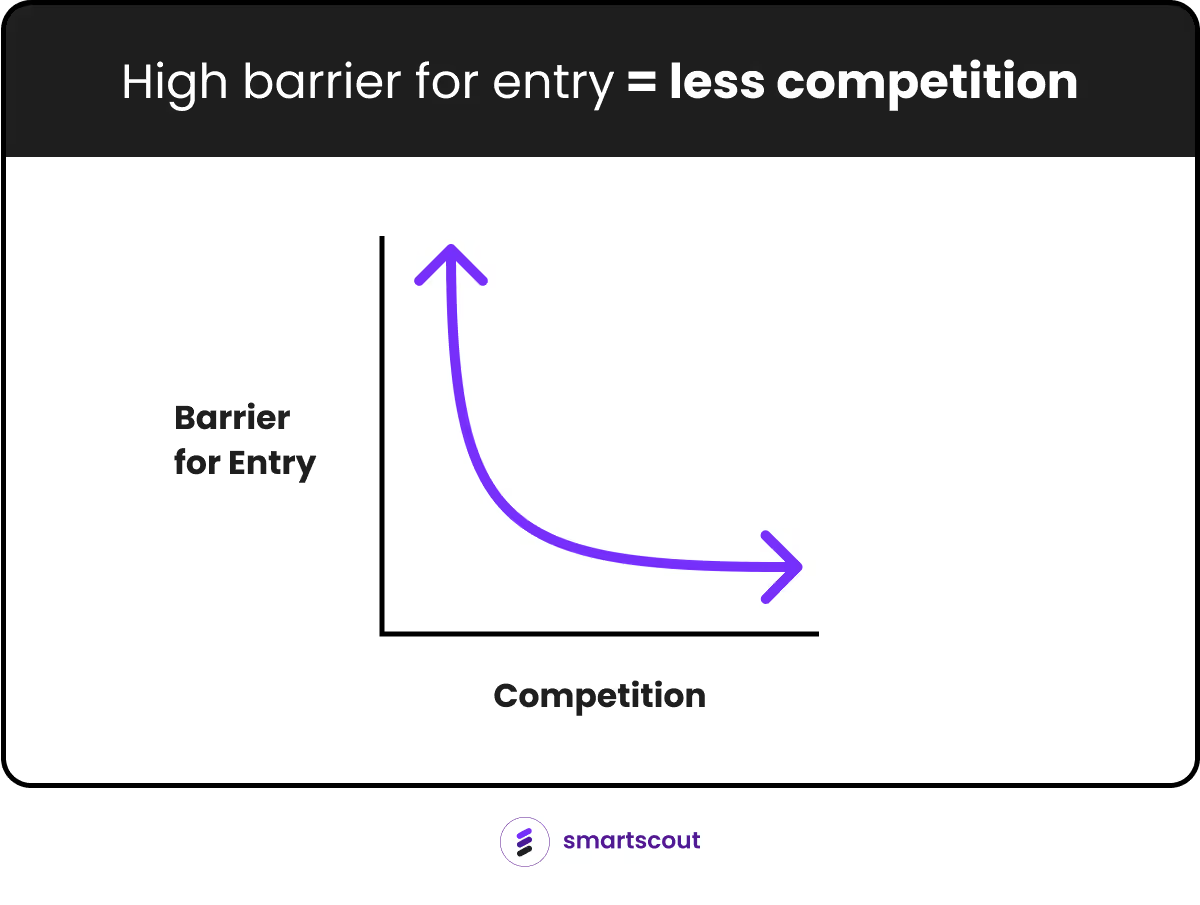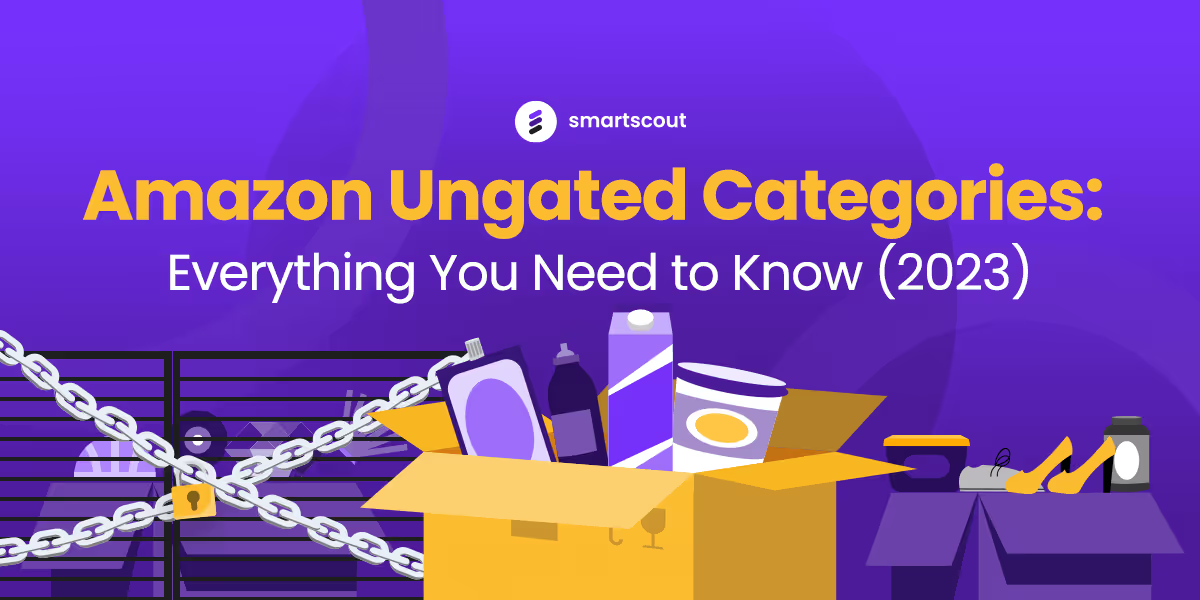Amazon has come a long way when it comes to increasing its category restrictions.
Back then, there were fewer regulatory policies for categories and products that could be sold on the platform. Amazon has since implemented stricter requirements for sellers, such as having a professional seller account and providing additional documentation to be approved to sell in specific categories.
Thankfully, there are still a number of categories that don't need approval from Amazon to start selling in — most commonly known as Ungated Categories. And that’s what we’re going to explore in this post.
We’ll discuss Amazon's Ungated Categories, what it means to be gated, and everything you need to know to unlock categories that require approval.
Let’s dive in!
What Is an Ungated Category?
An ungated category is a group of products that don’t require sellers special permission from Amazon to sell. In other words, there’s no “gate” in place.
This means sellers can easily list and sell their products in this category without additional requirements or approval. Ungated categories are easier to get into, making it a great starting point for beginner Amazon sellers to get familiar with the Amazon platform and start selling products right away.
Some Ungated Categories Are Not Fully Open to Amazon Sellers
There are two levels of gating restrictions: category level and product or brand level.
- If a category is gated, the policy restrictions apply to ALL the products in that category.
- If a brand or product is gated, the policy restrictions apply ONLY to the specific brand or product.
Therefore, even if a category is ungated, some product or brand-level gating may still be in place, meaning that some products and brands within that category may still need approval to be sold.
List of Amazon Ungated Categories
Though Amazon increased its restrictions over the years, there are still 24 categories that don’t require approval to sell in.
If you're a new Amazon seller, knowing these ungated categories can help you quickly expand your product selection and reach more customers. Just remember that Amazon's policy is subject to change, so consider checking yearly for any updates.
Below is a list of Amazon Ungated Categories:

As mentioned, you don't need approval from Amazon to sell in partially ungated categories, except for some brands and products requiring more documentation.
What is a Gated Category?
A gated category is the antithesis of an ungated category.
It refers to a group of products that require special permission or approval from Amazon to be sold. In other words, there's a barrier to entry (thus, gated).
Suppose you want to unlock the gate and list products in these categories. In that case, you must go through the approval process, which may include providing additional information, certifications, or documentation.
Gated categories are usually higher-risk categories that require additional safety or regulatory compliance, such as food and beverages, beauty and personal care, or medical supplies.
Here’s a list of Amazon gated categories:

Requirements Vary for Each Category
Each gated category has different requirements and processes to get unlocked. It depends on the type of products, the risk associated with the category, and the regulations that apply to those products.
For instance:
- Categories such as Clothing, Jewelry, and Shoes may require sellers to provide proof of authenticity and quality control measures to ensure the product meets the customers' expectations.
- Categories such as Toys and Games or Home and Garden may require safety standards compliance documentation.
In general, unlocking a gated category requires the seller to provide documentation, such as invoices, product information, or safety certificates, and demonstrate their ability to comply with Amazon's policies and requirements.
Note: Depending on the marketplace's policies and regulations, the requirements and processes for ungating categories may change over time. Therefore, it's essential for sellers to regularly check Amazon's guidelines and updates to ensure compliance with the marketplace's requirements.
Difference Between Gated and Ungated Category
In a nutshell, the only difference between a gated and an ungated category is getting permission from Amazon.
Gated categories require sellers to get approval from Amazon to list products in that category. On the other hand, ungated categories do not require any approval from Amazon. This makes them an excellent option for sellers looking to list products quickly.

Why are Some Categories Gated on Amazon?
Quality and Safety: Some products may pose a higher risk to customers due to the nature of the product or the potential for fraudulent or counterfeit items. So gating certain categories help Amazon maintain the quality and safety of the products sold on their platform.
Maintain Customer Trust: Gating categories can also help Amazon prevent unauthorized sellers from selling counterfeit or unauthorized products, which can harm customers' trust and negatively impact Amazon's brand reputation. By gating certain categories, Amazon can ensure that sellers meet specific criteria and comply with the policies in a particular category.
Prevent Oversaturation: Amazon can maintain a competitive and diverse marketplace by limiting the number of sellers in a particular category. So gating certain categories help Amazon manage the supply and demand and prevent oversaturation in the marketplace.
Overall, gating specific categories on Amazon helps the marketplace to protect its customers, maintain its reputation, and ensure the quality of the products sold on its platform.
Benefits of Breaking Into Gated Categories
Breaking into as many gates as possible presents many advantages for sellers. Here are some reasons why:
- Less competition: Many people want to avoid the hassle of getting approval. Some of those who do give up when first rejected. So the taller the gate, the more people it repels. By getting access to a gated category, you face less competition and thus gain more visibility and sales opportunities.

The high barrier for entry is what repels other sellers away.
- Improved reputation: Gating is a signal that a seller meets specific quality and compliance standards. This improves your reputation among customers and other sellers on the Amazon marketplace.
- Diversification of product portfolio: By getting approval for multiple gated categories, you can diversify your product portfolio and reduce the risk of relying too heavily on a single product or category.
- Access to premium features: Some premium features on Amazon, such as advertising and sponsored products, may only be available to sellers who have approval to sell in gated categories.
- Increased sales opportunities: Gated categories offer more sales opportunities for sellers who have unique or high-quality products. The more markets you can access, the more customers you can sell to.
How to Unlock Gated Categories on Amazon
Unlocking one gated category can be your “golden ticket” to cash in more profits in your Amazon business. But how do you request Amazon to open the gate for you?

Simplified Flow for Getting Approval
Step 1. Log into your Seller Central account and select the Inventory tab. Then, click “Add a Product.”
Step 2. Search for the product you want to sell.
Step 3. Click “Show Limitations.”
Step 4. Then, click “Request Approval.”
Step 5. Fill out the Amazon Seller Request Form.
Step 6. Attach all the requirements, then click submit.
Requirements may include:
- An invoice from your supplier
- Be within 180 days of the application date
- Have your name and address match the information in your selling account
- Show the distributor's name and address
- Show at least 10 units of items bought
- An authorization letter from the brand
- Approval fee
- Other documents specific to a category
If your application is approved, you will receive an email from Amazon notifying you that you are ungated. If your application is denied, submit your application again. Sometimes, a different Amazon representative will approve the requests others have rejected.
Final Thoughts
Learning about Amazon ungated categories can be a great way to get started as an Amazon seller. It can help you familiarize the ins and outs of the Amazon platform and also help you sell right away.
If you want to unlock gated categories, you can follow the steps laid out in this article. The more gated categories you unlock, the more diversified your product offerings can be and the higher your potential for sales growth on the Amazon platform.










